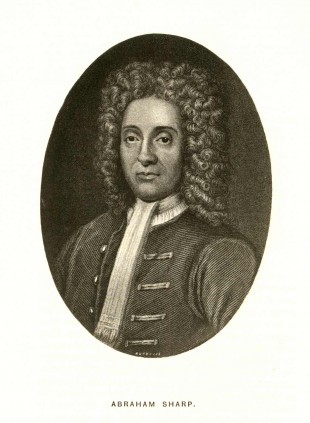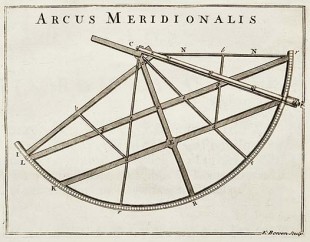…where east meets west
- Home
- Brief History
- The Greenwich Meridian
- Greenwich
(1675–1958) - Herstmonceux
(1948–1990) - Cambridge
(1990–1998) - Outstations (1822–1971)…
- – Chingford (1822–1924)
- – Deal
(1864–1927) - – Abinger
(1923–1957) - – Bristol & Bradford on Avon
(1939–1948) - – Bath
(1939–1949) - – Hartland
(1955–1967) - – Cape of Good Hope
(1959–1971)
- Administration…
- – Funding
- – Governance
- – Inventories
- – Pay
- – Regulations
- – Royal Warrants
- Contemporary Accounts
- People
- Publications
- Science
- Technology
- Telescopes
- Chronometers
- Clocks & Time
- Board of Longitude
- Libraries & Archives
- Visit
- Search
People: Abraham Sharp
| Name | Sharp, Abraham |
||
| Place of work | Greenwich & Horton Hall, Yorkshire |
||
| Employment dates |
1684–1685 & Aug 1688 – Autumn 1690 & 1705 – ?? |
||
| Posts | Servant & Assistant (to Flamsteed), 1684–1685 & Aug 1688 – Autumn 1690 | ||
| Calculator (for Flamsteed), 1705 – ?? | |||
| Baptised | 1653, Jun 01 |
||
| Died | 1742, Jul 18 |
||
| Burried | St Peter’s, Bradford, Yorkshire, (now Bradford Cathedral) | ||
| |
|||

Abraham Sharp. Nineteenth century copy of an engraving, by George Vertue, 1744. From Cudworth's Life and correspondence of Abraham Sharp, (London, 1889)

Flamsteed's Mural Arc. From Volume 3 of Historia Coelestis Britannica, (London, 1725)
Sharp was educated first in the village school at Little Horton and then at Bradford Grammar School. In June or July 1684 he began to assist Flamsteed at the Observatory, following the departure of Thomas Smith. Initially, he appears to have been only employed for a few months during 1684–5. He returned in August 1688, remaining until the autumn of 1690, during which time, the Mural Arc was constructed. It was with this instrument, that most of Flamsteed’s most important observations were made.
After leaving Greenwich, Sharp moved to Portsmouth where he appears to have had a connection with the dockyard. On the death of his eldest brother, he returned to Horton Hall in 1694, where he remained for the rest of his life. He continued to have an interest in mathematics, astronomy and instrument making and is believed to have adapted the Hall’s central tower to create an observing platform.
He carried on a considerable correspondence with Flamsteed and in 1704, made him a micrometer. On 9 March 1704/5 he accepted the post of Calculator at a probably salary of around £40 a year and began working on the preparation of material for Flamsteed’s Historia Coelestis, a project that faltered after Halley’s ‘pirated’ edition was published in 1712. Following Flamsteed’s death at the end of 1719, Sharp assisted Joseph Crosthwait with the posthumous production of his Historia Coelestis Britannica which was eventually published in 1725 and of the Atlas Coelestis which was published in 1729.
Sharp died on 18 July 1742 and was buried in St Peter’s Bradford (now Bradford Cathedral) where a monument was later erected. He was the great uncle of the instrument maker Jesse Ramsden who was commissioned in the late 1770s to make a replacement for Sisson’s 5-foot Equatorial Sectors at Greenwich and who made the Shuckburgh 4.1-inch Refractor which was presented to the Observatory in 1811. Neither Horton Hall nor Flamsteed’s Mural Arc survive. The former was demolished in the 1960s. The latter was removed from the Observatory in 1720 by Flamsteed’s wife Margaret. Apparently still in existence in 1721, it then disappeared from the records.
Further Reading
Life and correspondence of Abraham Sharp, William Cudworth, (London, 1889)
Sharp, Abraham (bap. 1653, d. 1742), Frances Willmoth, Oxford Dictionary of National Biography, (Oxford University Press, 2004)
Abraham Sharp, 1653–1742. E. Connor, Publications of the Astronomical Society of the Pacific, Vol. 54, No. 321, pp.237–43 (1942)
An account of the Revd. John Flamsteed, Francis Baily, (London, 1835)
The correspondence of John Flamsteed, the first Astronomer Royal, ed. E. G. Forbes and others, 3 vols. (1995–2001)
© 2014 – 2025 Graham Dolan
Except where indicated, all text and images are the copyright of Graham Dolan